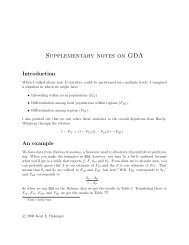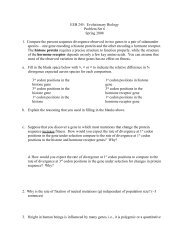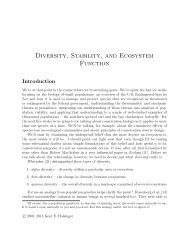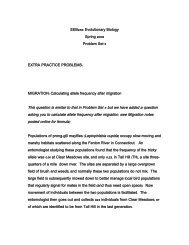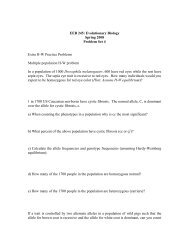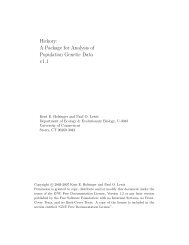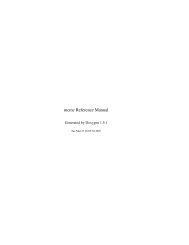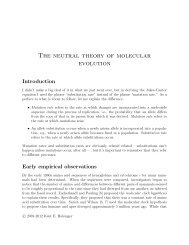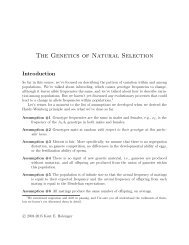Genetic Drift - Kent Holsinger
Genetic Drift - Kent Holsinger
Genetic Drift - Kent Holsinger
Create successful ePaper yourself
Turn your PDF publications into a flip-book with our unique Google optimized e-Paper software.
With those facts in hand, we’re ready to calculate ˆf t+1 .f t+1 ==≈=( ) ( ) ( ) ( ) ( ) ( )1 N − 1 1 1 N − 1 1+2 2N − 1 2N f 2 2N − 1 2N m( ) ( ) ( 1 N − 1 1+ 1 )2 2N − 1 2N f 2N m( ) ( )1 2N m + 2N f4 4N f N m( ) ( )1 N m + N f2 4N f N mSo,N (f)e≈ 4N fN mN f + N m.What does this all mean? Well, consider a couple of important examples. Suppose thenumbers of females and males in a population are equal, N f = N m = N/2. ThenN (f)e = 4(N/2)(N/2)N/2 + N/2= 4N 2 /4N= N .The effective population size is equal to the actual population size if the sex ratio is 50:50. Ifit departs from 50:50, the effective population size will be smaller than the actual populationsize. Consider the extreme case where there’s only one reproductive male in the population.ThenN e (f) = 4N f. (7)N f + 1Notice what this equation implies: The effective size of a population with only one reproductivemale (or female) can never be bigger than 4, no matter how many mates that individualhas and no matter how many offspring are produced.Variable population sizeThe notation for this one gets a little more complicated, but the ideas are simpler than thoseyou just survived. Since the population size is changing we need to specify the population11



